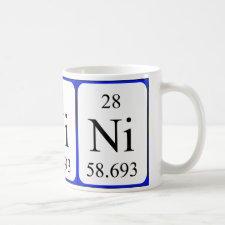
Authors: Monier M, Shafik AL, Abdel-Latif DA
Article Title: Synthesis of azo-functionalized ion-imprinted polymeric resin for selective extraction of nickel(II) ions.
Publication date: 2018
Journal: Polymer International
Volume: 67
Issue: (8)
Page numbers: 1035-1045.
DOI: 10.1002/pi.5609
Abstract: The work presented involved the fabrication and evaluation of an ion-imprinted azo-functionalized phenolic resin for selective extraction of Ni2+ ions from aqueous media. The azo-containing ligand was first synthesized by coupling of a p-aminophenol diazonium salt with resorcinol. The ligand was coordinated with Ni2+ ion template before condensation polymerization with formaldehyde and resorcinol was performed. The Ni2+ ions were extracted from the crosslinked resin matrix to finally afford the Ni2+ ion-imprinted Ni-PARF adsorbent. The synthetic steps were extensively investigated using elemental analysis and Fourier transform infrared, NMR and energy-dispersive X-ray spectroscopies. Also, the surface morphologies along with the surface areas of the adsorbent resin were evaluated using scanning electron microscopy and Brunauer-Emmett-Teller techniques, respectively. Batch experiments indicated that the pseudo-second-order kinetic equation provided the best fit with the experimentally obtained kinetic data and equilibrium was reached after 40 min. The isotherm studies were also in a good fit with the Langmuir model and the maximum adsorption capacities of Ni2+ ions with respect to both Ni-PARF and control non-imprinted C-PARF adsorbents were around 260 and 100 mg g-1, respectively. In the presence of Co2+, Cu2+, Zn2+ and Pb2+ as competing coexisting ions, the relative selectivity coefficients of Ni-PARF for Ni2+ were, respectively, 84.91, 44.97, 30.41 and 32.20. Regeneration experiments indicated that after eight adsorption/desorption cycles, the Ni-PARF adsorbent still maintained around 97% of its initial efficiency. © 2018 Society of Chemical Industry
Template and target information: nickel ion, Ni(II)
Author keywords: resorcinol, azo dye complex, nickel(II) ions, Ion-imprinting



Join the Society for Molecular Imprinting

New items RSS feed
Sign-up for e-mail updates:
Choose between receiving an occasional newsletter or more frequent e-mail alerts.
Click here to go to the sign-up page.
Is your name elemental or peptidic? Enter your name and find out by clicking either of the buttons below!
Other products you may like:
 MIPdatabase
MIPdatabase









